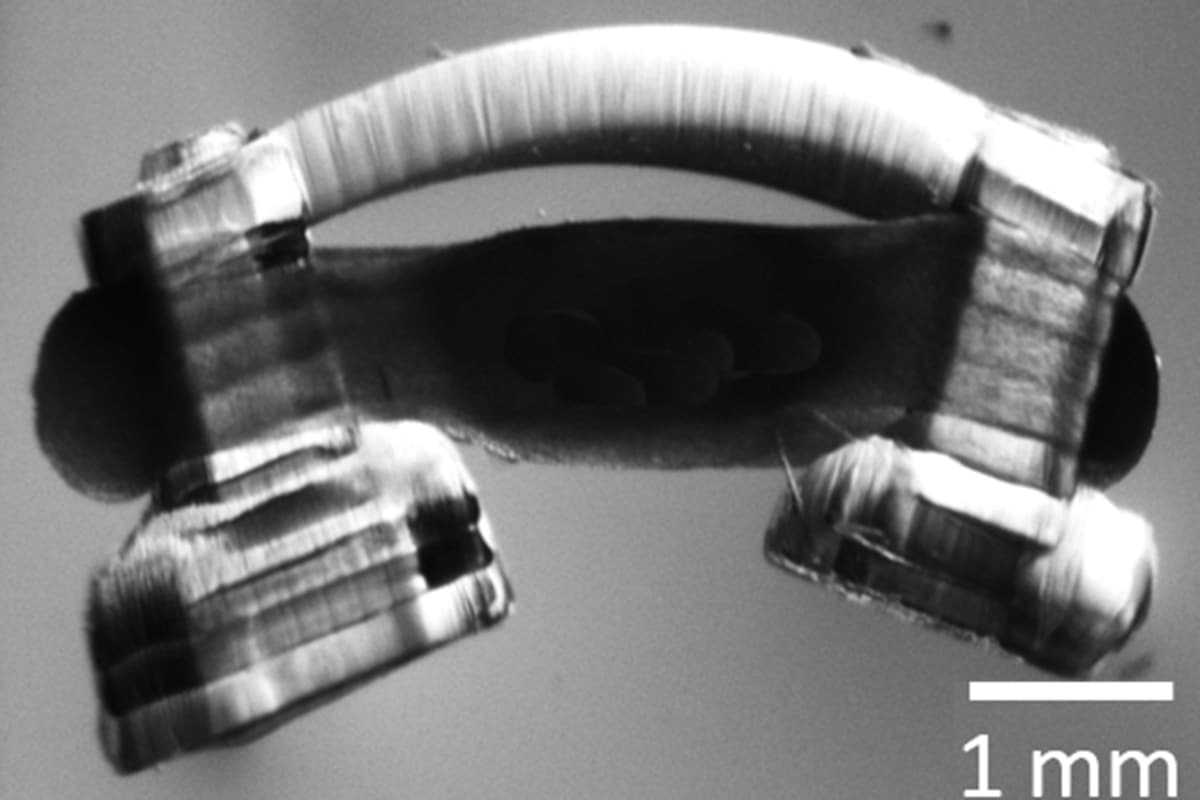According to study leader Martha Gillette who is a professor of cell and developmental biology at University of Illinois at Urbana-Champaign, “These are the beginnings of a direction toward interactive biological devices that could have applications for neurocomputing and for restorative medicine,” their finding have been published in the journal APL Bioengineering.
Biobots are propelled by a ring of muscle on a hydrogel skeleton, these researchers are the first to innervate them with spinal cord segments to give them a natural walking rhythm; to make this generation of spinobits the tiny skeletons were first 3D printed with two posts for legs and a flexible backbone, then it was seeded with muscles which grew into tissue, after which a segment of lumbar spinal cord from a rat was integrated.
“We specifically selected the lumbar spinal cord because previous work has demonstrated that it houses the circuits that control left-right alternation for lower limbs during walking,” said graduate student Collin Kaufman, the first author of the paper. “From an engineering perspective, neurons are necessary to drive ever more complex, coordinated muscle movements. The most challenging obstacle for innervation was that nobody had ever cultured an intact rodent spinal cord before.”
The team of researchers devised a method to extract the intact spinal cord, culture it, and integrate it onto the biobot, as well as culture the muscle and nerve tissues together all in a way so that the neurons would form junctions with the muscle.
Spontaneous muscle contraction was observed in the spinobots which indicated that the desired neuromuscular junctions had formed and that the two cell types were in fact communicating with each other. Glutamate neurotransmitters were added to prompt nerves to signal muscle to contract to verify that the spinal cord was functioning as it should be to promote walking; the addition caused the muscle to contract and the legs to move in a natural walking rhythm and when rinsed away the spinobots stopped walking.
The team has plans to further refine the movement of the spinobots to make their gates more natural. They are hopeful that this small scale spinal cord integration is a step in the right direction towards creating in vitro models of the peripheral nervous system which is difficult to study in both live patients as well as animal models.
“The development of an in vitro peripheral nervous system — spinal cord, outgrowths and innervated muscle — could allow researchers to study neurodegenerative diseases such as ALS in real time with greater ease of access to all the impacted components,” Kaufman said. “There are also a variety of ways that this technology could be used as a surgical training tool, from acting as a practice dummy made of real biological tissue to actually helping perform the surgery itself. These applications are, for now, in the fairly distant future, but the inclusion of an intact spinal cord circuit is an important step forward.”




